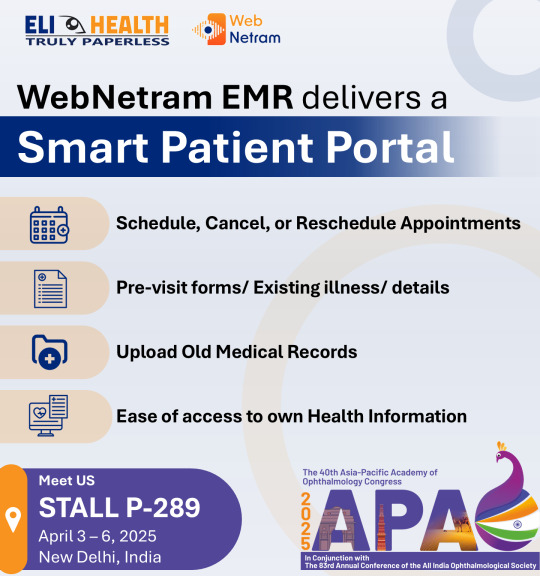#MedicalBilling
Explore tagged Tumblr posts
Text







Unicode Healthcare is the Best Medical Coding & Billing , CPC certification , AAPC & AHIMA Course, All AAPC Certification, Training Institute Located in in Bangalore, Hyderabad .Accelerate your Career Growth |+91-7022469777
4 notes
·
View notes
Text
"Accurate medical transcription is the key to successful patient care."
#transorzesolutions#healthcare#medicalcoding#medicalbilling#doctors#learning#classrooms#codes#medicaltranscription
3 notes
·
View notes
Text
Best Medical Coding Center in Palakkad
Medical coding plays a vital role in the healthcare industry, ensuring accurate documentation, billing, and insurance claim processing. With an increasing demand for skilled professionals, enrolling in a reputed medical coding institute in Palakkad can be the key to unlocking rewarding job opportunities in hospitals, healthcare organizations, and insurance companies.
Key Features of the Best Medical Coding Institutes in Palakkad
1. Globally Recognized Certifications
The best training institutes prepare students for industry-leading certifications that enhance employability.
2. Comprehensive Course Modules
ICD-10, CPT, and HCPCS coding systems
Medical terminology and human anatomy
Insurance claims processing and compliance standards
Hands-on training with real-world case studies
3. Expert Trainers & Practical Learning
Top institutes offer training from industry professionals, ensuring interactive and practical knowledge transfer.
4. Multiple Learning Modes
Classroom Training: Ideal for those who prefer structured, face-to-face instruction.
Online Courses: Best suited for working professionals and students seeking flexibility.
5. Career Support & Job Placement
Leading training centers provide resume building, interview coaching, and job placement assistance to help students secure positions in reputable healthcare firms.
How to Select the Right Medical Coding Institute in Palakkad?
Verify certification affiliations and accreditation.
Assess the curriculum for industry relevance.
Check student success stories and placement records.
Compare course fees and payment options.
Begin Your Medical Coding Career Today!
If you’re looking for the top medical coding institute in Palakkad, explore reputable institutes that provide quality education, hands-on training, and career support. Start your journey toward a promising future in the healthcare industry today!
#MedicalCoding#MedicalBilling#HealthcareCareers#Palakkad#MedicalCodingCertification#AAPC#AHIMA#CBCS#CareerOpportunities#MedicalCodingTraining#HealthcareIndustry#WorkFromHome
0 notes
Text

Struggling with coding errors and claim denials? RevMax Healthcare ensures precision, compliance, and faster reimbursements with our expert medical coding services! 🏥💼
✅ HIPAA-Compliant & Accurate Coding ✅ Minimize Denials & Maximize Revenue ✅ Certified Professionals You Can Trust
📞 Get in touch today! 📩 [email protected] 🌐 Visit: https://revmaxhealthcare.com/
#MedicalCoding#RevenueCycleManagement#HealthcareSolutions#MedicalBilling#HIPAACompliance#RevMaxHealthcare#HealthcareProviders#MedicalCodingExperts
0 notes
Text










Why Compliance Matters in Medical Documentation 🏥✍️
Medical scribes play a crucial role in ensuring accurate, legal, and ethical documentation in healthcare. 📑 Compliance with HIPAA, patient confidentiality, and billing accuracy** safeguards both patients and providers.
🔍 Key Compliance Tips: ✔ Stay updated on healthcare laws and coding changes. ✔ Avoid documentation errors—mistakes can lead to denied claims or legal issues. ✔ Master SOAP notes & EHR documentation** for standardized, error-free records. ✔ Secure patient data with proper login practices to prevent breaches.
📚 Get Certified with ACMSO for expert-led compliance training! Boost your skills and become a trusted professional.
🌐 Visit: app.acmso.org
🔗 Follow @acmsomed for more compliance insights!
#medicalscribe#hipaacompliance#EHR#medicaldocumentation#scribetraining#healthcarelaws#patientconfidentiality#medicalbilling#scribelife#medicalscribetraining#clinicaldocumentation#healthcareadmin#healthit#compliancematters#medicalrecords#HIPAA#ScribeTips#legalhealthcare#ehrdocumentation#securehealthcare#medicalscribes#healthcarejobs#scribecertification#patientsafety#medicalethics#acmsorocaba
0 notes
Text
Solving Complex Billing Issues – A Real Case Study at Qiaben Health
At Qiaben Health, we tackled a dental billing challenge where claim denials delayed payments. Dental billing errors led to revenue loss, frustrating both the provider and patients. Our team streamlined dental billing workflows, corrected coding mistakes, and improved insurance verification. As a result, dental billing accuracy increased, reducing denials by 40%. Qiaben Health ensures seamless dental billing for all providers!
Read More:
#QiabenHealth#DentalBilling#MedicalBilling#BillingSolutions#RevenueCycleManagement#ClaimDenials#HealthcareBilling#BillingExperts#InsuranceVerification#SeamlessBilling#BillingSuccess#CaseStudy#DentalPractice#EfficientBilling#BillingOptimization
0 notes
Text

#EHR#EMR#WebNetram#EliHealthEMR#Doctors#Ophthalmology#Dental#ObGyn#GeneralPractice#HealthcareIT#Telehealth#MedicalBilling#PatientCare#PracticeManagement#HealthTech#DigitalHealth#ElectronicHealthRecords#AIinHealthcare#HealthcareInnovation#netramemr
0 notes
Text
Medical Coding Course Fees in Nagercoil
MEDICAL CODING
In order to make the collection and analysis of healthcare data easier, medical coding is the process of assigning standard codes to medical diagnoses and procedures related to patient care. A new route to success and an outstanding career that stands out from the crowd is medical coding.
IS MEDICAL CODING A GOOD CAREER ?
Yes, for those who are organised, analytical, detail-oriented, and passionate about helping others, a career in medical coding may be a good fit. Medical coders are in great demand because the industry is expanding quickly. Medical coding also provides significant work security, compensation possibilities, and promising career opportunities.
Transorze is an ISO 9001:2015 certified company for delivering high quality “Healthcare BPO” training and placement services, totally dedicated in providing the services of Medical Transcription Training,Medical Coding Training , Medical Scribing Training, ,Digital Marketing Training.
Contact details
Phone no: +919495833319
E Mail:[email protected]
2 notes
·
View notes
Text
💼📈 Discover how outsourcing your medical billing with VelanHCS can streamline your revenue cycle management and enhance your financial performance. Let us handle the complexities while you focus on patient care. 📊✨
#MedicalBilling#RevenueCycleManagement#HealthcareBilling#OutsourcedBilling#MedicalBillingServices#HealthcareRCM#FinancialPerformance#RCMOutsourcing#BillingSolutions#VelanHCS#PatientCare
0 notes
Text
Medical Coding Certification in Coimbatore
Medical coding is an essential aspect of the healthcare industry, ensuring that patient records are properly documented and medical services are billed correctly. If you're looking for a stable and high-growth career, enrolling in a medical coding certification program in Coimbatore can be your gateway to exciting opportunities in hospitals, insurance companies, and healthcare firms.
Top Medical Coding Certifications in Coimbatore
AAPC CPC (Certified Professional Coder)
AHIMA CCS (Certified Coding Specialist)
CBCS (Certified Billing & Coding Specialist)
What to Expect from a Medical Coding Course?
ICD-10, CPT, and HCPCS coding guidelines
Medical terminology and anatomy
Billing, insurance claims, and compliance training
Hands-on case studies and practical coding experience
Choosing the Best Medical Coding Institute in Coimbatore
Accreditation and certification affiliations
Experienced faculty and practical training modules
Affordable fees and flexible payment options
Placement assistance and career guidance
Start Your Medical Coding Career Today!
If you're looking for a career that offers stability, growth, and flexibility, a medical coding certification in Coimbatore is the perfect choice. Take the first step towards a rewarding future in the healthcare industry today!
#MedicalCoding#HealthcareCareers#MedicalBilling#Coimbatore#MedicalCodingCertification#AAPC#AHIMA#CBCS#CareerGrowth#MedicalCodingTraining#WorkFromHome#HealthcareIndustry
0 notes
Text
Let's be real, nobody wants to mess up ICD-10 codes. I'm here to tell you how to classify a removal correctly and get paid for it! Also, here is some info on when removal is medically necessary
0 notes
Text

Florida Chiropractors! It is time to maximize your revenue and streamline your practice with expert-designed chiropractic billing services from Instapay Healthcare Services. https://instapayhealthcareservices.com/chiropractic-billing-services.php www.instapayhealthcareservices.com [email protected] +1 (646) 851-2115
0 notes
Text
4 Steps to Choose the Best Outsourced Medical Billing Services
Medical billing is the process of recording and tracking all the financial transactions of the patient and then creating a bill for their medical procedures and diagnoses. However, there are several challenges in a billing operation such as billing inaccuracies, adherence to the updated billing regulations, and many more which eventually hinder the growth of healthcare providers. So that is why choosing the best outsourced medical billing services can be a feasible option for the providers to improve their cash flow.

What are the steps of choosing the best outsourced billing services?
Step #1: Check their experience and track record
Do you know what is the main reason for billing inaccuracies? Today there are many medical providers who have healthcare staff with not proper billing knowledge and end up facing complex nuances of billing process. So that is where you should check for those professionals who have years of experience in dealing with billing specialties. Moreover, their experts closely collaborate with the staff of the healthcare providers to make sure that the billing processes are accurate and also efficient.
Step #2: Check if they thoroughly comply with all the regulations
As the healthcare industry is regulated by constantly changing billing regulations, so that is why it is becoming difficult for healthcare providers to adhere to all the updated billing regulations. But the issue is if the providers focus on learning all the billing regulations, then they will not have the time to provide quality care to their patients which will hinder their growth. On the other hand, the best outsourced billing services stay updated with all the real-time regulatory changes, thereby leading to fewer billing errors and streamlining the claim process.
Step #3: They follow step-by-step prior authorization procedure
Prior authorization is difficult due to its complex rules and regulations which becomes challenging for the healthcare providers to manage. Apart from that, it takes a lot of time and effort to complete and track prior authorization requests, which increases their workload. Here, the outsourcing operational extension billing services manage the prior authorization process by navigating all the prior authorization protocols faster and efficiently.
Step #4: Dedicated Resources
As the staffs of the healthcare providers are involved in almost all healthcare operations, so they do not have enough time to particularly focus on billing operations, thereby increasing the billing errors. On the other hand, the medical billers provide dedicated resources who are specifically assigned to handle all the billing related tasks of the provider. Hence, it creates a streamlined billing process which leads to an increased cash flow.
Due to the ever-changing healthcare billing regulations, it is becoming difficult for providers to manage their billing issues. Moreover, if they focus only on improving their billing process, then they may not get the time to focus on quality patient care which will hinder their growth. So that is where the outsourced medical billing services can help to correct the billing error to make a quicker claim submission. So, if you plan to grow your business, you may consider outsourcing a billing company to improve your business.
0 notes
Text
Revenue Cycle Management (RCM) at Qiaben Health is a streamlined process that ensures dental billing practices get paid efficiently by handling everything from patient registration to final payment collection.
Read More:
#QiabenHealth#RevenueCycleManagement#RCM#DentalBilling#ClaimSuccess#HealthcareFinance#InsuranceClaims#HassleFreeBilling#Medicalbilling#Insuranceverification#Patientbilling#FasterPayments#Healthcare
0 notes
Text
💼 Medical Billing Compliance: What Every Healthcare Provider Should Know
Medical billing is complex, and non-compliance can lead to penalties, revenue loss, or legal risks. But don’t worry—we’ve got you covered with expert tips to help you stay compliant!
🔹 HIPAA & patient privacy – Ensure data security 🔹 Accurate coding – Prevent claim denials & rejections 🔹 Regulatory updates – Stay ahead of changes in medical billing laws
Following these steps can protect your practice and optimize cash flow. Read the full guide here: https://deletemyinfo.com/how-to-delete-instagram/
0 notes
Text

Get Coding to Make a Difference in Healthcare!!!!!!
2 notes
·
View notes